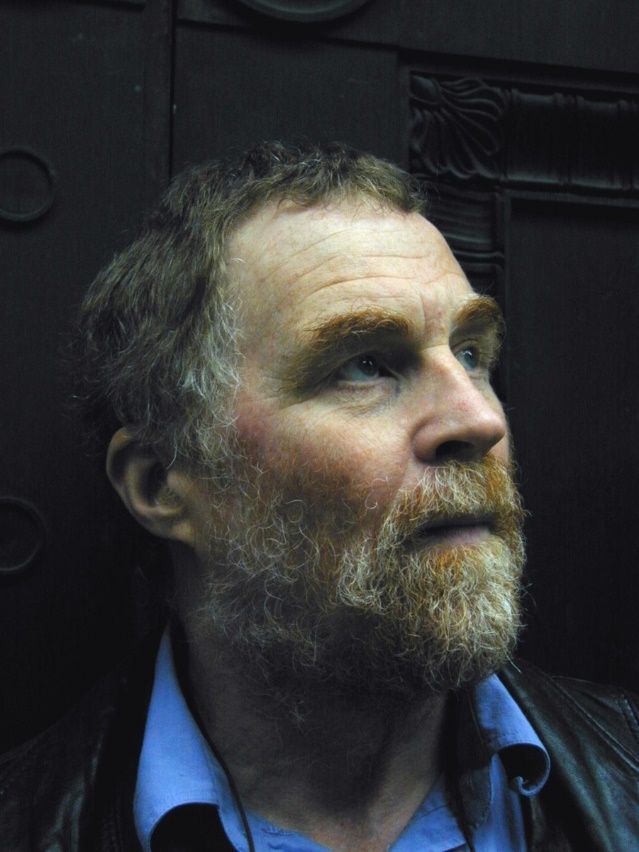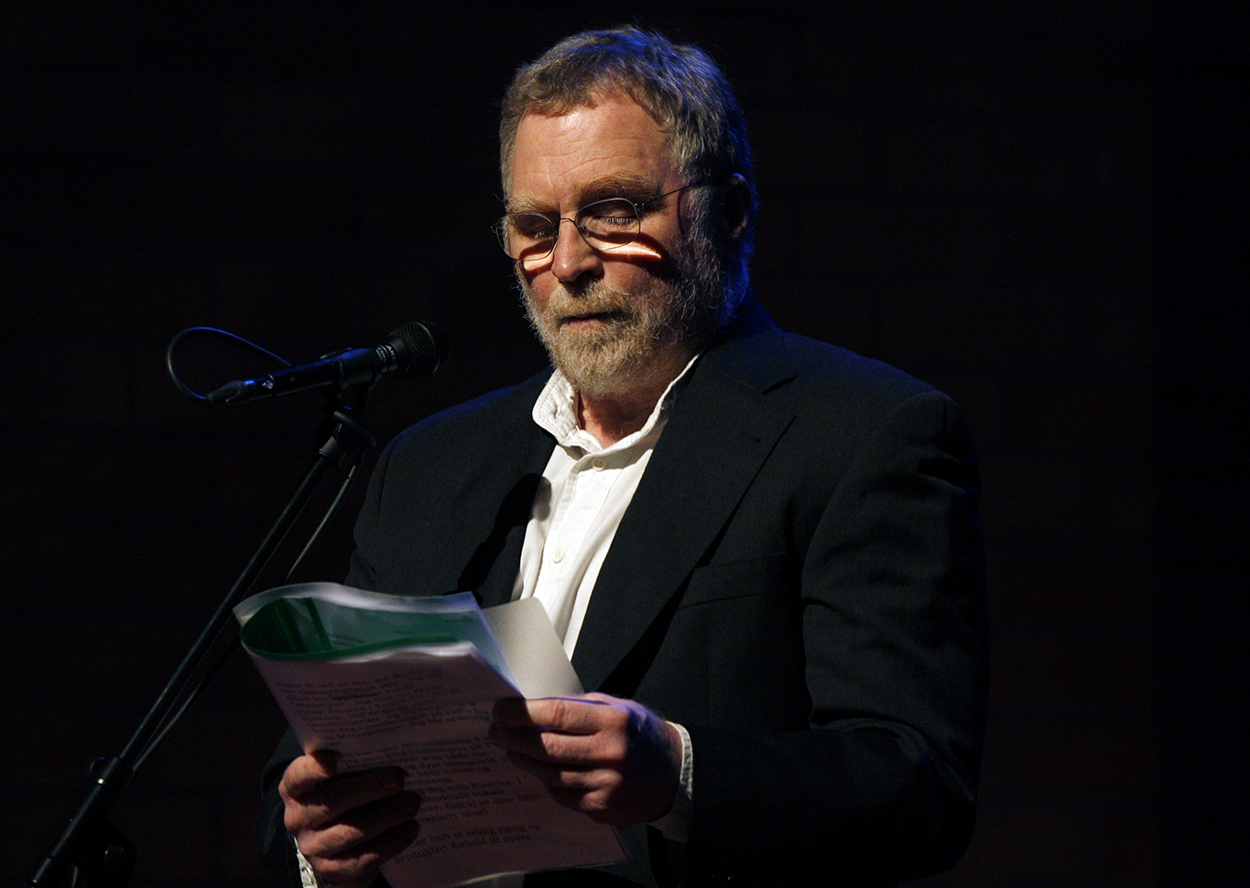 Photo: Lisbeth Medbøe Risnes/National Library
Photo: Lisbeth Medbøe Risnes/National Library«…»
He began studying music at The Westminster Choir College in Princeton, New Jersey in 1964. The next year, he transferred to Indiana University School of Music where he studied composition under Bernhard Heiden and Iannis Xenakis. He completed his studies in 1969, and continued composition lessons with Piotr Perkowski in Warsaw. In 1971-2 he followed courses with Werner Kaegi and Otto Laske at the Instituut voor Sonologie in Utrecht, Holland. He completed his education in Norway studying pedagogy.
Thommessen started his teaching career at the Norwegian State Academy of Music in 1972, where he taught among other subjects methodical improvisation, instrumentation, musical communication and musical rhetoric.
In 1980, he started together with fellow composer Lasse Thoresen courses in Sonology. He was involved in setting up the six year composition courses at The Norwegian State Academy of Music. From 1989 until retiring in 2014, he was professor of composition at the same institution. For many years, he lectured on the history of opera at the State Opera School, and during the academic year 2008/09 was a guest professor at the Århus Conservatory of Music in Denmark.
From 1972 on, he received more and more notice as a composer. Some sound was chosen for the ISCM Music Days in London, Up-Down was premiered by the Oslo Philharmonic in 1973 and Mutually was given Sweden´s Contemporary Music Quality Prize and was performed at the Bergen International Festival in 1973. After this break-through he received a series of commissions. Stabsarabesk, Maldoror, The Secret Gospel, The Overtone, A Concert-Chamber are all major works from this period.
At the beginning of the 1980`s he began using quotations from earlier composers as a starting point for his own works, and this technique helped to contrast his own modernisms with historical precedents. From A Glass-Bead Game for large orchestra and choir (1979-80) with quotations from Verdi and Beethoven and the piano concerto Macrofantasy on Grieg’s A-minor are representative works. In the following years, he composed the horn concerto
Beyond Neon (1981) and the double concerto for cello and organ Through A Prism (1982-83), all premiered separately during the years 1980 to 1983 by the Oslo and Bergen Philharmonic Orchestras as well as by the Minneapolis Symphony. These works are parts of a concert-opera under the collective title A Glass-Bead Game which had to wait until 2005 for a complete performance at the Bergen International Festival.
As Festival composer in Bergen 1985, the solo piano composition EingeBACHt was performed as was the completed version of the chamber opera The Hermaphrodite which had had a highly successful premiere at the Royal Swedish Opera earlier that same year. The year also saw the music to Romeo and Juliet written for a production that opened the new building of Det Norske Teatret. For a period of ten years, Thommessen wrote theater-music for productions at that theater, ranging from Ibsen’s Emperor and Galilean to
Shakespeare’s King Lear. Other compositions from that time include The Emerald Tablet(1985), Gnostic Fragments (1985), and the cello concerto The Phantom of Light (1990).
Works that include musical quotations appear regularly in his catalogue.One such is the violin concerto BULL´s eye, which he regards as a symphonic wrapping around Ole Bull´s Concerto in A-Major, as is the Corelli Machine for strings ( 2002), Felix Remix (2014) for string quartet and Felix Fragments – A Symphonic Scherzo for String Orchestra (2015) with quotes from Mendelssohn. The documentary opera Christ´s Bride (2012) is based on the infamous Knutby murders in Sweden and is a paraphrase on Leoncavallo´s Pagliacci.
A work in which he composes in parallel with his historic counterpart is the song cycle Veslemøy´s Visions (2007). Whereas Grieg´s cycle The Mountain Maid consists of eight settings of Arne Garborg's mystical poems, Thommessen´s song-cycle sets 26 of his poems giving the work a length of two hours. Grieg´s cycle is incorporated unchanged but it is completed with material discarded by Grieg and complemented with elaborations in Grieg´s and Thommessen´s own styles.
Thommessen has worked closely with performers. Such collaborations with the actress Juni Dahr have resulted in works based on Norse and Greek mythology: Edda-Da (The Words of the High One)(1991) and Kassandra (1996) – A concert drama for actress with Orchestra, the latter work is also translated into English (Cassandra). In collaboration with the students at the Opera School, he wrote Banners for Music (1978) and the chamber-opera Hertuginnen dør (The Duchess Dies) based loosely on the fourth act of John Webster´s drama The Duchess of Malfi (1611). He worked closely with the violinist Peter Herresthal on the aforementioned violin concerto for which he received the Music Critics Award in 2002, as well as with the group POING, writing the works An Opera-Chamber – with the soprano Guri Egge , as well as Rapid Clouds (2011) and Four Tchaikovsky Sketches (2019) for them. Working with the Nederlanse Blasers he composed Lass O! Deine Tränen (1998), based on motets by Orlando di Lasso, and Musicke for Vandales based on John Dowland´s Lachrimae. A collaboration with the violist Soon-Mi Chung resulted in the viola concerto Near the Comet´s Head (1994) and Between Ludwig and Louis (2004).
With his inclusive knowledge of music and art history and their related subjects, he became a valued teacher at the State Academy. He has lectured widely and often put his points of view in writing. He created a radio series with Tone Lunaas Kværne on the state broadcaster NRK called In the Composer´s Attic. The resulting radio documentary I am Multi-Channeled received the Prix Italia in 1996.
In addition to being the featured composer at the Bergen International Festival, he has been the featured composer at the North-Norwegian festival LINK, the Båstad Music festival in Sweden, as well as the Ålborg Musikdage in Denmark.
He has been a board member of Ny Musikk (Norwegian section of the ISCM), the Norwegian Society of Composers and has been a member of the Arts Council in Denmark. He was a prime instigator in the establishing of Music Information Centre Norway – a non-commercial publishing house for new Norwegian music. In 2019, he established The Skovly Foundation which has as its main aim to support Norwegian students of music theory and composition by donating his home and his wide-ranging collection of scores and recordings for future use by them.
Prizes and Honours:
- Featured composer at the Bergen International Festival, 1985
- Family Wilhelm Hansen Award, 1987
- Critics Prize for Composition for The Duchess Dies, 1967-1988
- The Lindemann Prize in Composition,1989
- Work of the Year from the Norwegian Society of Composers, 1989
- Edvard Prize for large composition for Bull´s-eye,1989
- Nordic Council Music Prize for Through a Prism, 1990
- 2, Prize at Rostrum, Paris, for Through a Prism, 1990
- Featured Composer at LINK Festival in Lofoten, North Norway, 1995
- Prix Italia for the radio program I am MULTI-Channeled Norwegian Broadcasting Company, 1997
- Hafslund´s Culture Prize, 2001
- Elected member of the Royal Swedish Academy of Music, 2002
- Family Fegersten Music Prize, 2010

Thommessen was awarded the Lindeman Prize in 1989, and later compèred the ceremony for a number of years, here in 2009.
Photo: Lindemans Legat/Knut Utler.
 Photo: Lisbeth Medbøe Risnes/National Library
Photo: Lisbeth Medbøe Risnes/National Library